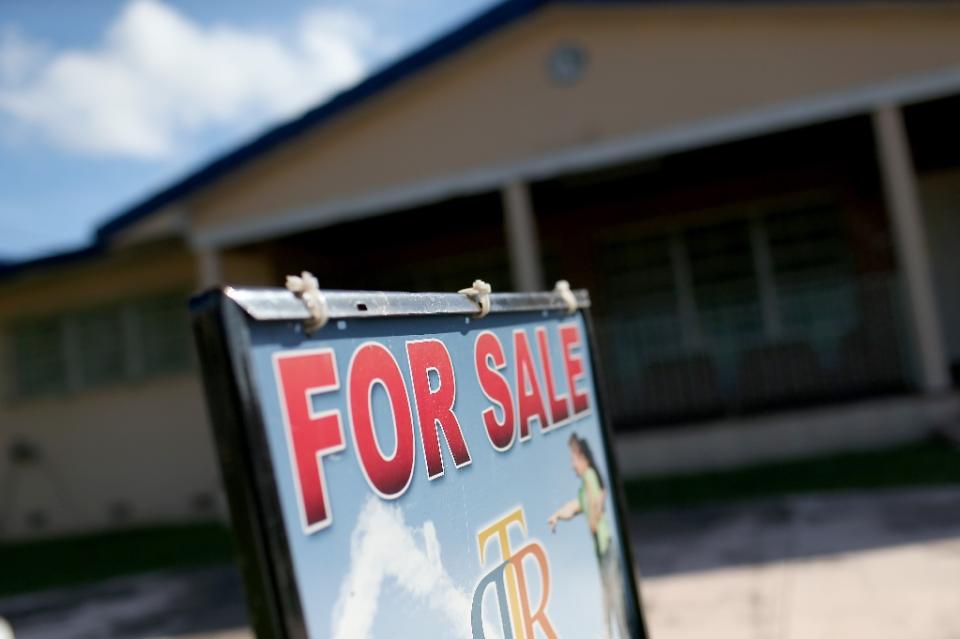Existing home sales rose 3.2 percent to a 5.49 million annualized pace in June as stable job prospects and a much-improved economy encouraged buyers. But thanks to shifting demographics and the lingering effects of the housing crash, more Americans are still renting than they have in decades.
After a long stretch of cautious, respectable gains, the housing market finally got a little crazy in June. Existing home sales rose 3.2 percent last month to a 5.49 million annualized pace, according to data released Wednesday by the National Association of Realtors (NAR). That's much better than the 5.4 million pace analysts were expecting and a 9.6 percent increase year-over-year.
It was the fastest pace for home sales since February 2007, and prices continued to climb: the median single family home sold for $236,400 last month, a 6.6 percent increase above June 2014, and higher than the previous home price peak set in 2006.
“Buyers have come back in force," NAR chief economist Lawrence Yun said in the report’s release. “This wave of demand is being fueled by a year-plus of steady job growth and an improving economy that's giving more households the financial wherewithal and incentive to buy.”
Strong sales activity for housing is a good thing for many reasons, but here’s a huge one: If more and more Americans take the leap and buy homes, it could finally ease the strain on renters, who, thanks to a combination of demographic and economic factors, are seeing their housing costs balloon and their ranks become more crowded than they have been in decades.
Rental nation
Where the ownership side of the housing market had been locked in a steady crawl until recent months, the rental side has been in a full-out sprint. Nationwide, rental prices have increased 4 percent since April 2014, outpacing the growth of home sale prices, according to a May report from Zillow. Several major cities saw much larger rent increases, led by a 14.9 percent hike in San Francisco and a 12.9 percent rise in nearby San Jose, Calif. Twenty-four major metros, from Dallas to Denver to Tampa, Fla., saw their rents rise at a faster rate than the national average.
The rental market is also more crowded than it’s been in two decades: according to the Census Bureau, the national vacancy rate for rented homes hit 7 percent in 2015, its lowest level in at least 20 years and a drop from about 12 percent in 2009. The home ownership rate, meanwhile, fell to 63.7 percent in early 2015 – its lowest level in 25 years according to the Census Bureau.
“A gap persists between the median monthly rent and the median monthly mortgage payment: rentals are more expensive,” IHS Global Insight economists Patrick Newport and Stephanie Karol write in an e-mailed analysis of the NAR’s report. “This suggests the presence of substantial barriers preventing current renters from becoming owners.”
Millennials, but also …
As with many things economy-watchers fret over, part of the issue is Millennials, who are finally striking out on their own but delaying life benchmarks, like marriage and children, which typically lead to home ownership.
Growth in the housing market is closely tied to what economists call “household formation,” or when a person leaves his or her family home and becomes a separate unit, says Mark Fleming, chief housing economist for the insurance firm First American. Since the recession, he notes, household formation by Millennials has ramped up, but virtually all of those new households are renting.
“We’ve created barely any new owned households,” he says, but that makes sense with the priorities of most young adults. “One of the primary reasons is mobility. When you’re younger, you’re not sure where you want to live yet, and it’s more expensive to sell a house than to [end a rental agreement].”
Renting is expanding beyond the typical college grad with his first job and three roommates, however. The share of single-family homes in the rental space is rising, from 9 percent a decade ago to 13 percent in 2005, according to a recent report from Moody’s Analytics. That suggests that many families who lost their homes during the housing crisis still haven’t built up their savings and credit enough to get back into the market, says Rolf Pendall, Director of the Metropolitan Housing Communities and Policy Center at the Urban Institute, a Washington think tank.
Baby Boomers, too, have potential to squeeze the rental market from the other end as their income levels drop and they transition out of homeownership. A recent Urban Institute report suggests that the share of Boomers in the rental market will more than double by 2030.
Both Mr. Fleming and Mr. Pendall argue that on its own, a nation of renters isn’t cause for alarm (unless you’re a certain type of real estate developer). But it is a problem, Pendall says, if rental demand is driving prices up to the point where people can no longer find affordable housing in the areas they want to live and work.
“There’s an inability of the economy right now to deliver jobs at wages that pay enough money so that people can afford their rent,” he says. “As rents go up, more families will be at risk for homelessness,” a problem that disproportionately affects poor African American and, to a lesser extent, Latino communities.
Relief ahead?
Still, if home sales continue to accelerate and the economy continues to improve, it should help ease the strain on the rental market in the long-term. As young adults age and settle down in larger numbers, Boomers will eventually pass away, loosening a still-tight inventory of homes available for purchase. “[Millennials are] a bigger generation than the Baby Boomers, so anything they do en masse is really going to swing the market,” Fleming says.
But in the meantime, both he and Pendall say that measures should be taken to make both renting and buying, if people so choose, less of a burden, including better accessibility to affordable mortgages and further loosening of credit standards. On the rental side, Pendall says, one possible solution is easing the zoning rules for areas that are dominated by owner-occupied homes to allow homeowners to build additional units on their lots. “The biggest segment of growth is people over 65,” he says. “They want to age in place, but they may need extra income an support for someone nearby. Allowing property owners to build second units if they want to, and providing support financially so they can do it more easily, is a great medium to longer term rental strategy – taking neighborhoods that are all owner-occupied and giving them the means to mix rental and owner."







 It’s no secret curb appeal matters to buyers, but too often, minor details are overlooked when setting the stage out front. To roll out the welcome for buyers, replace your worn welcome mat with a summery alternative, and install large house numbers in a prominent location that can be viewed from the street.
It’s no secret curb appeal matters to buyers, but too often, minor details are overlooked when setting the stage out front. To roll out the welcome for buyers, replace your worn welcome mat with a summery alternative, and install large house numbers in a prominent location that can be viewed from the street.





